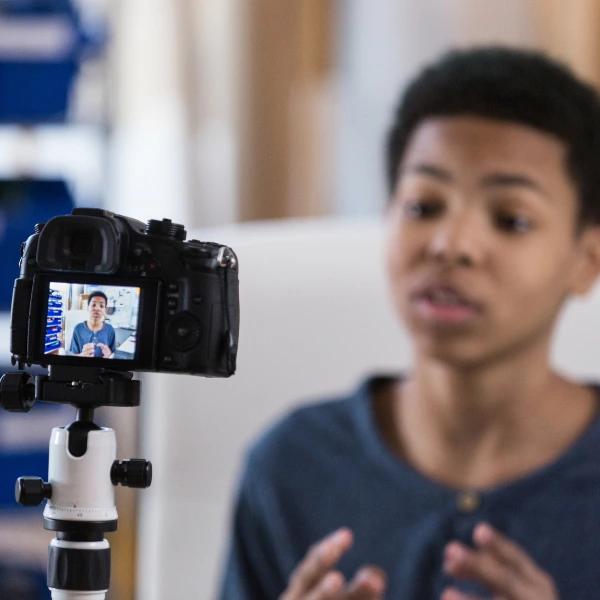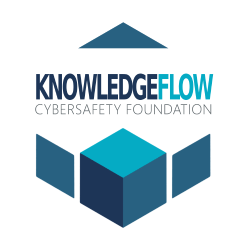The #UnHackathon 2025
Where Cybersafety Meets Creativity
No Coding Or Hacking Skills Required!
A new concept in digital literacy and cybersafety training. Unlike a regular hackathon, the main focus of The #UnHackathon is cybersafety education and digital media literacy through a creative design challenge.
The contest opens on September 15th and all entries must be submitted by October 31st. Register to receive the contest entry details and the design challenge information. This contest is open to all students in grades 3-12 across Canada.
The 2025 UnHackathon is now closed.
A Note to Teachers
The #Unhackathon Design Challenge uses Project-Based Learning (PBL) to engage students after they complete their grade-level CyberByters course. Building on what they have just learned in CyberByters, students transform their key takeaways into creative projects that educate older adults, such as grandparents or community members. This hands-on approach builds digital citizenship, critical thinking, and creativity
Teachers and students can access the CyberByters course directly through CyberByters.ca, eliminating the need for accounts or sign-ups. Students may work individually, in small groups, or as a class to create projects in any format, such as videos, posters, games, infographics, songs, and more, that clearly explain three cybersafety concepts. The challenge is flexible, curriculum-aligned, and designed to make online safety education both engaging and impactful.
Think you can’t? Think again!
Previous Winners
The only limit is your creativity and imagination!


Design Challenge
How do you take what you know about cybersafety—and make it click for someone older who didn’t grow up with the internet?

Take A Cybersafety Course
All courses are located on cyberbyters.ca
- The grade ranges are recommended, but students are welcome to explore courses from other grade levels as well!

Grade 3 | CyberByters: Cyber Explorers
With Cyber Explorers, students in grade 3 will join Hoot the Owl on an interactive journey through the Cyber Explorer Map, learning how to stay safe online, protect their devices, build healthy digital friendships, and make wise choices online.

Grades 4 – 6 | CyberByters: Cyber Wizards
With Cyber Wizards Academy, students in grades 4-6 will embark on a magical journey through the digital world, learning how to craft strong passwords, protect their personal data, navigate the online world safely, and be smart online.

Grades 7 – 9 | CyberByters: Cyber Defenders
The Cyber Defenders course is designed for middle school students in grades 7–9, where they will learn to protect personal information, manage digital risks, and make informed choices while developing into responsible leaders in their online communities.

Grades 10 – 12 | CyberByters: Cyber Smart
The Cyber Smart Certificate Program equips high school students with essential digital safety skills, cybersecurity knowledge, and insights into technology careers, enabling them to navigate the online world with confidence.

Choose a Senior Relative or Older Adult to Focus On
Think of someone in your life who may not be very tech-savvy. This could be a grandparent, older neighbour, or even a teacher.
Ask yourself: What parts of the course would be most helpful for them? What online risks do they face?

Create Your Entry
Now it’s your turn to teach! Choose a creative format to explain at least three cybersafety concepts from the game in a way your chosen senior could understand.
You can create:
- A poster
- A video
- An infographic
- A presentation (e.g., PowerPoint, Google Slides)
- A game
- Or any other creative format you like!

Make It Relevant and Easy to Understand
Use examples from daily life that your senior relative can relate to. Use clear language, helpful visuals, and practical advice.

Submit Your Entry
Follow the instructions under Judging Guidelines to send in your work.
Make sure to include:
- Your name and age
- A short explanation (2–3 sentences) of who your entry is for and how it helps them stay safe online

Gain mad digital Skills by completing the Design Challenge!
Video, Poster, Webpage, Infographic, Game … you make it, You Enter It
Participants will be given a design challenge centered on teaching others about an aspect of cybersafety. Solving the challenge will require imagination, creativity, and innovation. We provide the cybersafety topic and resources and you provide the inspiration.
Creations should be engaging and informative; intended to teach others about that specific cybersafety topic. All entries must be submitted by midnight October 31 (EST).
Why you Should Enter the #UnHackathon
“Tell me and I forget, teach me and I may remember, involve me and I learn.”
― Benjamin Franklin
Cybersafety Knowledge
The best way to learn is to teach someone! Become a cybersafety champion for your family and friends.
Digital Skills
Learn how to make a vlog, design an infographic, code a game or webpage. The possibilities are endless.
Digital Media Literacy Skills
Learn to access, analyze, evaluate, and create digital media in a critical and responsible way.
Build your Portfolio
Examples of your creations can be an advantage when applying for education and employment opportunities.
Creative Expression
Use your unique imagination and perspective to create something new. Choose the medium that suits you.
Prizes!
Yes there are prizes, fame and glory to be had too!!
Did Someone Say Prizes?
Submit your entry by October 31st to enter the contest. Prizes will be awarded according to age group and type of entry.

Classroom and Teams

Individual

Elementary Grades

High School Grades
“Winning the UnHackathon was like reaching the top of a mountain, but the real adventure was in the climb. I learned so much and had so much fun along the way, and I can’t wait to see where my love for graphic design will take me next!”
– Past #UnHackathon Winner

Develop Digital Literacy skills while having Fun!
Digital Literacy Skills
Learning digital media literacy skills is no longer an option, but an absolute necessity. In today’s digital age, youth are not just consumers of information, but creators and distributors as well. By gaining the knowledge and skills to critically analyze, evaluate, and produce digital content, you are empowered to navigate and participate in our rapidly changing digital landscape with confidence and responsibility.
Cybersituational awareness refers to the ability to understand and interpret the complex and rapidly changing digital landscape. It involves being aware of online risks, mitigating potential threats, managing your online activities, accounts and actions responsibly, and identifying vulnerabilities in your digital environment, your devices and networks. It is an essential component of digital literacy.

In Partnership with ICTC
The #UnHackathon is one of the many ways that The Information and Communications Technology Council (ICTC) is partnering with Canadian industry, government, not-for-profits and the education sector to increase digital literacy skills in youth and adults and to provide educators with tools and resources.
ICTC believes in the importance of developing a highly skilled, educated and motivated ICT/digital workforce that will drive Canada’s economic growth and innovation. In partnership with Canadian industry, government, not-for-profits and the education sector, ICTC strives to define critical competencies and standards; build education and employment pathways for youth and adult learners to increase digital literacy/skills; provide educators with tools and resources to enhance learning, and connect youth to jobs.
